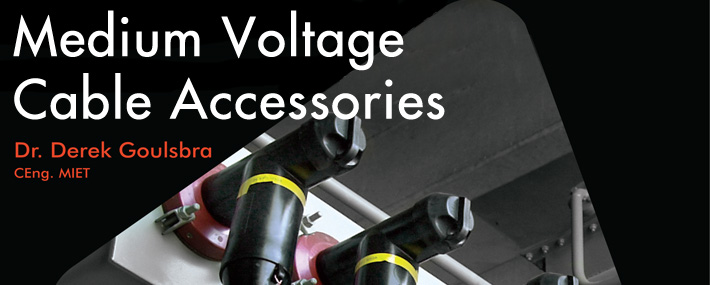Continuing on from our preview of the first chapter of Derek Goulsbra’s new book, available here in part one, this post previews the start of chapter 2 ‘Medium Voltage Cable Accessories: A Theoretical and Practical Appraisal.
Chapter 2 – Electrical breakdown of air and solid dielectrics
In order to understand accessories and how they perform it is necessary to look at the fundamental electrical breakdown of air and solid dielectrics, which are, of necessity, mixed in dry cable accessories.
2.1: Electrical Breakdown of Air
Air at normal temperature and pressure, which means a temperature of 20 ° C and pressure of 760 mm Hg, has an intrinsic breakdown strength of 3 MV m-1 . This means that if a voltage is applied between two electrodes, which provide a uniform field, and the electrodes are spaced 10 mm apart, electrical breakdown of the air in the form of an arc will occur at 30 kV. This value is the same for a.c. (the peak value), d.c. and impulse. The electric strength is simply found by dividing the applied voltage at breakdown by the electrode separation. In the present example:
Breakdown strength E = Voltage applied / Electrode separation
= 30 kV per cm
= 3 kV per mm
= 3 MV per m
A uniform field is shown in fig.1. By definition lines of equal voltage are spaced equally across the shortest distance of the electrodes.
In practice, the intrinsic electric strength of air is of little use because conductors at high voltage are not conducive to producing a uniform field and the earth plane is often a flat sheet interspersed with bolt heads and nuts for various fixings. At the other end of the scale from a uniform field is the point-plane configuration shown in fig. 2.
Figure 1: Uniform Field
In this situation, it will be noted that the equipotential field lines are much closer together near the point electrode and spaced further apart as the earth electrode is approached. If the separation of the electrodes is again 10 mm, it will be found that the voltage required to break down the air will be as low as 10 kV, depending upon the sharpness of the point. The reason for this is that as the field lines are close together near the point, the breakdown strength of the air, i.e. 3 MV m-1 will be reached with only a few kV applied. At this point the air breaks down locally to create corona around the needle electrode. There will not be complete breakdown of the gap initially because the electric stress nearer the earth plane is very much lower. The corona produced does, however, ionise the air thus reducing its electric strength and if the voltage is increased further, total breakdown occurs at a much lower level than if the electrodes presented a uniform field.
Corona occurs in many situations without causing complete failure of the system – e.g. on overhead power lines and around insulators on these lines, especially when there is rain or fog in the atmosphere.
Whenever air is used as part of the insulation in electrical equipment, there is the possibility of corona occurring. It is not desirable for this to happen in an enclosed space and thus designers ensure that sharp profiles are eliminated and spacing is adequate to prevent corona at working voltage.
It should be borne in mind that corona in an enclosed piece of switchgear or cable box can, if the humidity is high, create various acids, which will eventually corrode the metal work of the equipment and this must be avoided. It will be shown later that this effect can also be caused by badly installed cable termination.














